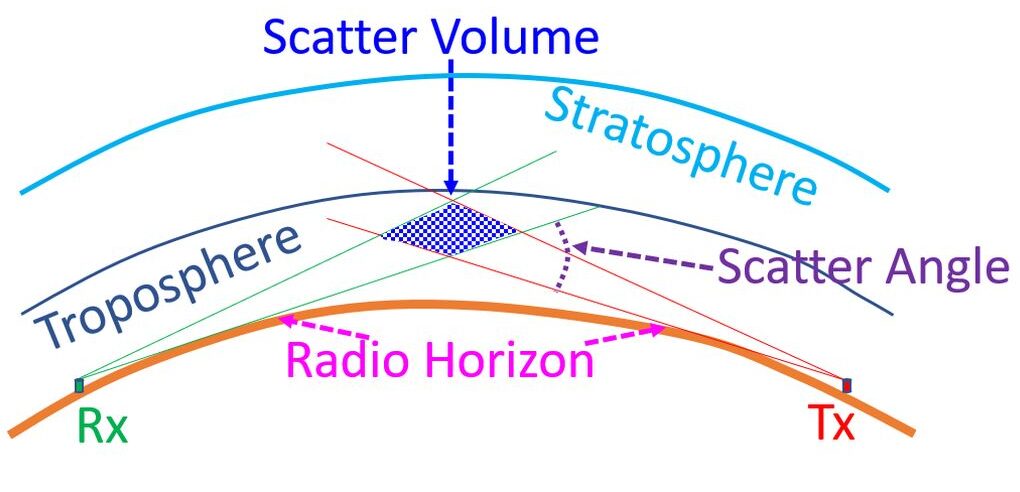What is Troposcatter Propagation?
What is Troposcatter Propagation?
Tropospheric Scatter Propagation is known in short as Troposcatter Propagation. Troposphere is the lowest layer of the atmosphere. Though Troposcatter is typical at microwave or super high frequency or SHF band, it can also occur at VHF and UHF bands. The height of the troposphere is about 20 km near the equator, which comes to about 9 km in polar regions in summer. Height of the troposphere is more in summer than in winter. Troposphere can refract higher end of the radio spectrum. HF is reflected typically by the ionosphere, much above the troposphere. Tropospheric scatter was used mainly by the military prior to the era of satellites.

When the transmitting and receiving stations point their antennas to a common scatter volume in the troposphere as shown in the illustration, troposphere refracts the signal towards the receiving station. Troposcatter may work from frequencies as low as 144 MHz to 10 GHz and useful communication can occur from 100 km to 700 km. Typically the transmitting power has to be high and the receiver quite sensitive, as the signal loss is high in troposcatter. Yet it is supposed to be a reliable mode of communication at the higher end of the useful radio spectrum. The angle between the two radio horizon rays is known as the scatter angle. The volume of intersection of the two beams is known as the scatter volume. Scatter volume will be high for low gain antenna with a wider beam and lower for a high gain antenna with a narrower beam.